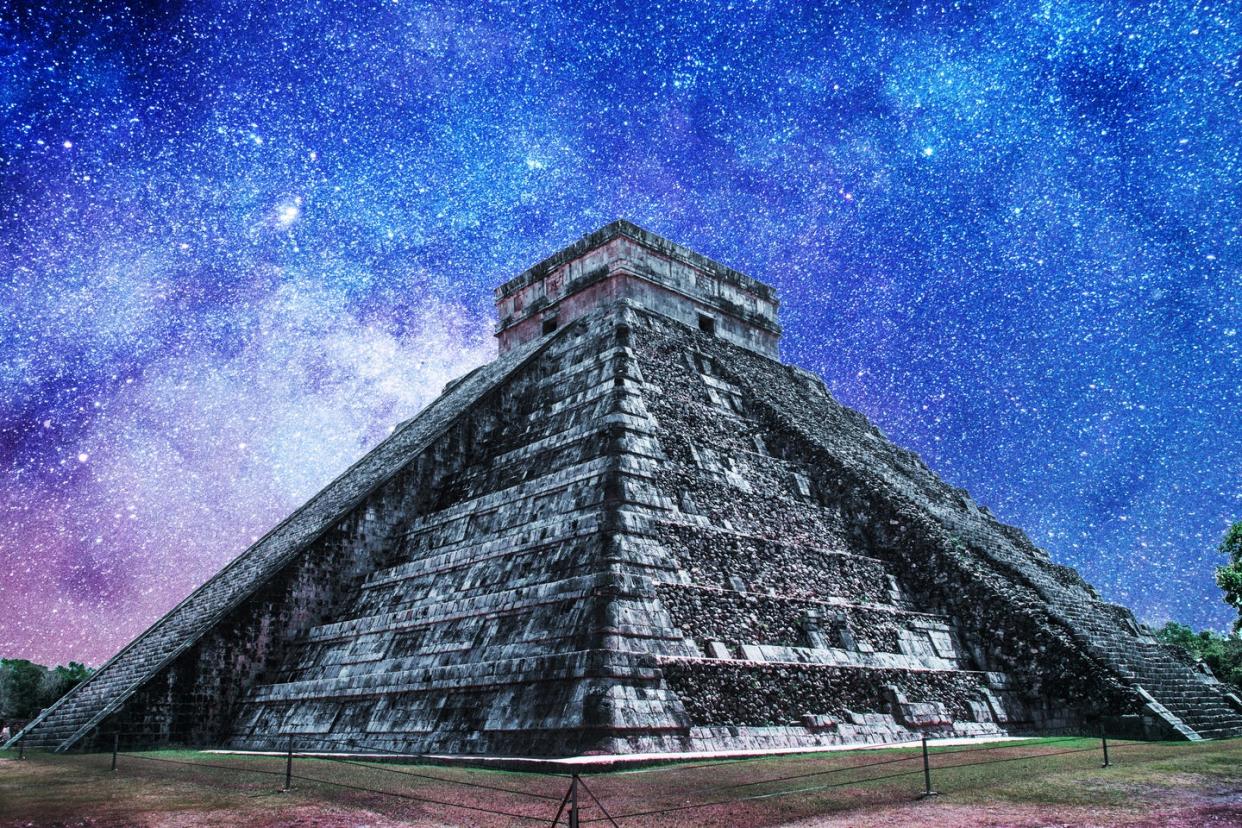Archaeologists Found a Mysterious Ancient Stone That Could Lead to a Lost Maya City

An archaeological find in Mexico revealed a stone slab with 123 hieroglyphic symbols that, in part, describe the founding of a town in 569 AD.
The slab was located on the floor of what was once a pool at the Nohoch Mul pyramid.
Details about ancient Maya rulers are also featured on the slab.
A stone slab covered with 123 hieroglyphic cartouches discovered at an ancient Maya pyramid in Mexico might not be a treasure map to a lost city, but it comes incredibly close.
The discovery—located in the archaeological zone of Cobá on what is now the eastern side of the Yucatán Peninsula—came from the bottom of what was once a pool. The large stone slab measures a full 118 square feet and features a panel containing 123 hieroglyphic characters carved directly onto the rock.
Experts are just beginning to understand the stories these symbols tell, but they already know that at least part of the slab describes the founding of the town of Keh Witz Nal on May 12, 569 A.D., according to a translated statement from the National Institute of Anthropology and History. Just where the lost Maya city—the name for which translates to “Deer Mountain”—once existed remains a mystery.
Cobá took its place in Maya culture no earlier than 100 B.C., and enjoyed a continuous life as a city until about 1,200 A.D. Known as the “city of chopped water,” the site may have had up to 50,000 residents at one time, and still features the largest pyramid in Mexico—the Nohoch Mul pyramid.
As archaeologists continue to uncover more of Cobá—slowly working their way through the buildings and monument sites covered in soil, jungle, and salt—crews discovered a causeway at the pyramid that led to the former pool.
Once discovered, crews began a cleaning process to remove the muck covering the L-shaped slab that was carved to fit the piece of stone. Restoration included the injection of lime mortar fillers to fight off any further water damage. The team also made three-dimensional models of the glyphic text to allow for deeper study off-site.
In addition to the information regarding Keh Witz Nal, the team believes that they have uncovered the name of an additional Cobá sovereign—K’awiil Ch’ak Cheen. This is the first time experts have seen the name, and it should help them fill gaps in the dynastic sequence of the region. The finding of the name also allows experts to confirm that, of the 14 city-state rulers identified at Cobá so far, it was common to adopt the name of the Maya god of lightning, K’awiil. Ancient rulers may have believed that the name gave them additional attributes as protectors of the site.
As experts decipher additional pieces of the 123 cartouches, they hope to learn more about the region—and, just maybe, figure out where Deer Mountain actually is.
You Might Also Like
